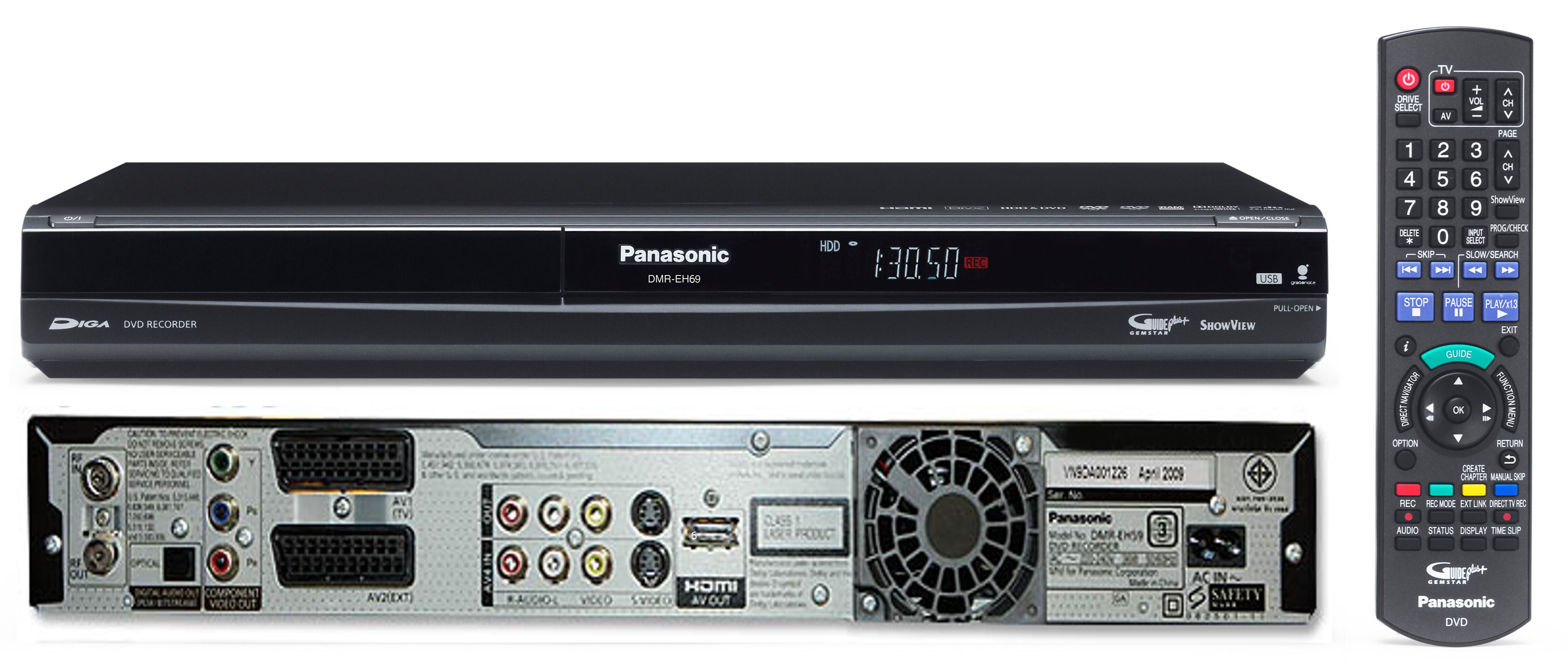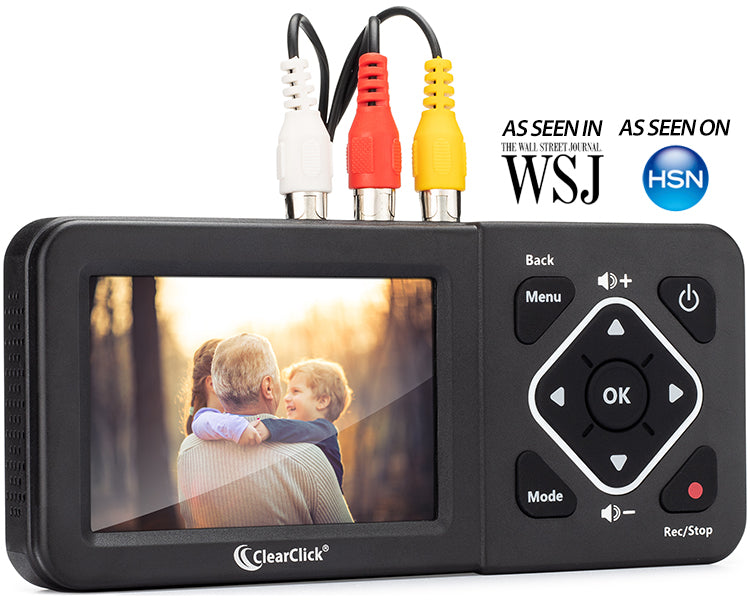This very thread is why I enjoy my visits to this site--and with the pandemic I can occupy my brain a bit reading and learning about stuff I care about...once in a while I can make a contribution myself.
*In 1983 I purchased a Commodore 64 computer and monitor.
*In 1985 I purchased a Toshiba Beta Hi Fi VCR:
http://www.betamaxcollectors.com/toshibabetavcrmodelv-s443.html
*In June 1986 I bought a
Sony CCD-V8AF-E (8mm camcorder):
Camcorder A
https://commons.wikimedia.org/wiki/File:Sony_CCD-V8AF_camcorder-CnAM_43583-IMG_5358-gradient.jpg
Our oldest daughter was born in July 1986...and with video from Camcorder A, I used the Commodore computer/monitor combination to build graphic transitions and constructed a 90 minute video to send to the grandparents. We kept the original Beta tape...long after the Toshiba Beta VCR shot craps.
*Sometime near the turn of the century I bought this:
Canon ES6500V (Hi8 camcorder):
Camcorder B
https://global.canon/en/c-museum/product/8mmvc422.html
Camcorder A purchased in 1986 had gotten a bit finicky as far as playing 8mm tapes was concerned...and the 'Hi8' format used by the ES6500V (Camcorder B) promised better video but also was backwards-compatible with the tapes used by the Camcorder A.
*Then a couple of years later I bought this (smaller and digital):
Canon Elura 40MC (MiniDV camcorder):
Camcorder C
https://www.usa.canon.com/internet/...mcorders/support-minidv-camcorders/elura-40mc
*Camcorder C too began to act up, necessitating the purchase of yet another Canon camcorder in 2008:
Canon Vixia HF100 (SD card-recording camcorder with HDMI out):
Camcorder D.
https://www.usa.canon.com/internet/...upport-high-definition-camcorders/vixia-hf100
The recordings from Camcorders A & B (8mm tapes) and Camcorder C (MiniDV tapes) were stored in a box...where they resided, along with the Beta tape made in 1986 documenting the first few days of our first daughter's life, some for literally decades.
I knew they needed to be digitized. But the activation energy for projects like that, to me, can be significant...
Then in 2016, my father-in-law died...the funeral was a few days after a previously-scheduled engagement that my wife had long looked forward to. The drive was long (several hours) and naturally talk of Grandpa Bob and his visits with our own children was one of the more pleasant discussion topics while in the car.
In particular, I had a recollection of one specific 10-15 minute video recorded just days after our oldest daughter was born, when Bob and his wife (my wife's parents) drove from IL to NY to visit their first grandchild. The memory made my wife joyful.
That was the kick in the pants I needed to get busy.
It is fun to read Jack Douglas wrestle with what I wrestled with a few years ago. I know he'll make it work.
The key thought is simply to get the analog material into your computer...to digitize it all.
As a previous poster in this thread noted, some camcorders of a certain vintage have the ability to accept an analog video and audio signal from another device (in our case, an 8mm camcorder) and digitize that analog signal and pass it along via Firewire (IEEE 1394) to a computer that has a Firewire port.
Camcorder C above fills the bill; and the Dell XPS 420 desktop computer I'm writing on now (now 13 years old) has the required Firewire port.
Software is needed to capture what comes into the computer via the Firewire port:
WinDV freeware works great and is what I used.
https://www.videohelp.com/software/WinDV
The video (including audio) files that WinDV generates are .avi files.
Once you have the .avi files you're good to go.
The very best way to massage .avi files (and most video that I deal with) is
Handbrake (freeware)...the learning curve isn't really that steep and I always learn something along the way.
https://handbrake.fr/downloads.php
=====
After getting up-and-running, it was about ten days worth of work to get the 30-40 tapes digitized. I didn't do much editing along the way--that's a whole 'nother kind of effort that requires a different mindset. But I did break up many of the tapes into the separate recordings that were present on each tape.
The beta tape from 1986 proved problematic (I had nothing to play it on and the local shop in my town couldn't play it either...I was worried they would damage it!)--so I sent it off to a company in Atlanta GA who charged 25 bucks or so to digitize it. The result was great.
=====
Key to this sort of project (at least to me) is figuring out how to get the files to family members in a way that they will be able to watch them on their own big screen TVs (not a smallish computer screen). Most folks don't have a home theater computer!
The
Sony PS3/PS4 is a great way to accomplish this; the video files (in the proper format, made possible via Handbrake) are easily installed on the hard disk within the Sony device or can be copied to an appropriately-formatted external hard disk that is connected via USB. The Sony device sort of serves as a bridge between computers and standard televisions that people watch every day.
So both of our daughters have hours and hours of these videos on their Sony devices...and the results are much appreciated...particularly by boyfriends (

).
=====
Along the same lines, I've made it my business to convert our collection of DVDs, BluRays and CDs into files that everyone can access if they wish. With the advent of streaming services and Apple Music etc, though, I think my efforts here have not been appreciated all that much.
On the other hand, I'm probably 80% finished organizing our digital jpegs and printed snapshots between the mid-1990s and today...with snapshots from the 1980s (some earlier) and 1990s yet to be digitized.
I do not have the negatives organized in any meaningful way...what I purchased to enable somewhat rapid digitization of the prints (a few of which are in albums) is the Epson FastFoto FF 680W.
https://www.dpreview.com/news/23436...personal-photo-scanner-now-available#comments
I have a decent 'workflow' with the Epson that enables scanning of hundreds of images per session; the quality of the scans is good enough my purposes.
And the software used to organize and post online [password protected] is something called jAlbum.
https://jalbum.net/en/
...currently at 31K images and counting.
Maybe someone will find this useful.
Me? I now have a place that includes a list of our camcorder purchases...and a reminder that literally a couple dozen of our Canon cameras (film, compact digital, and dSLR as well as mirrorless) are (fingers-crossed emoji) much more reliable than Canon's camcorders! Nearly all of the cameras still work!!
=====
A good link for inexpensive digitizing hardware and some advice if you don't own 'Camcorder C' (or one like it):
https://www.tomsguide.com/how-to/digitize-vhs-tapes
Thanks for reading.



